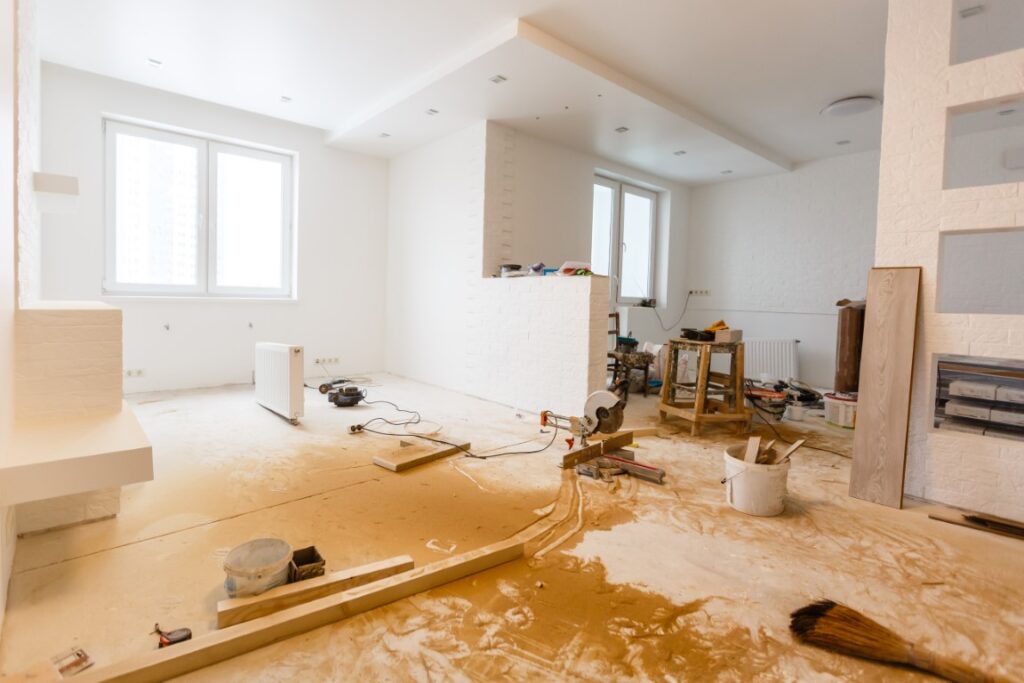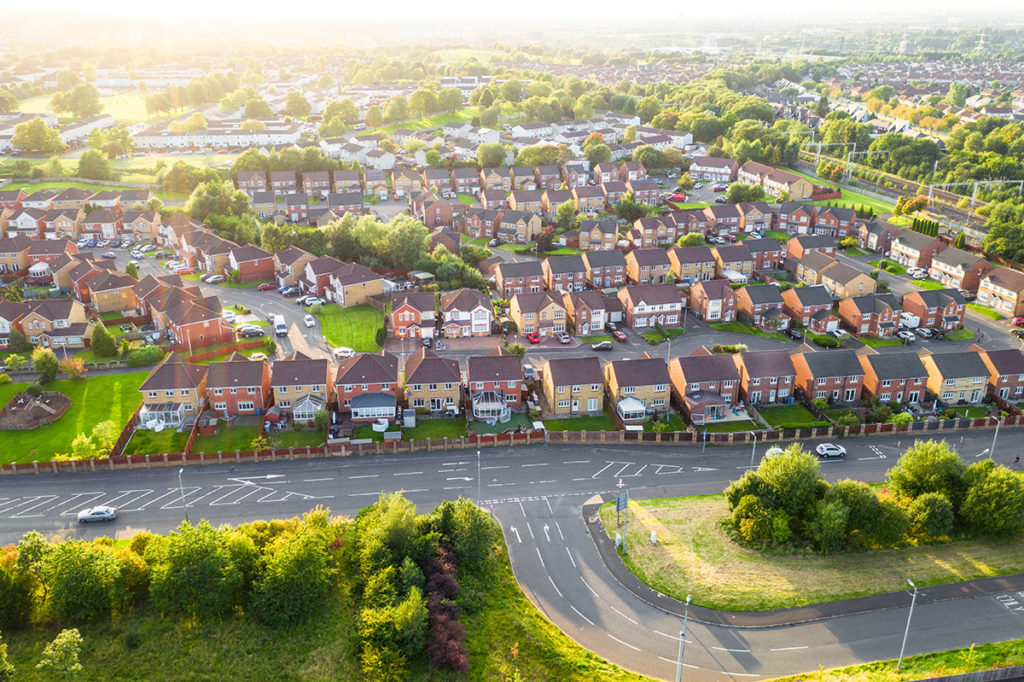For construction, conversion or heavy refurbishment of property or buildings

Lenders can provide finance for the following:
Property development means buying a property, developing it through renovation, then either selling it on for a profit or renting it out to tenants.
One of the most appealing things about property development is that anyone can do it. You do not need any qualifications or training to get started.
Property development can be extremely profitable but often requires large amounts of capital for purchases and works.
Unless you have money saved to cover all your costs, you’ll need to borrow to pay for it.
We specialise in bridge finance, second charge, commercial and development finance.
Below we discuss whats involved, how it works, rates, example borrow rates and fee’s as well as some FAQ’s
Rates from 0.48%
For property you want to buy, renovate and sell
Below are some typical examples of how much you could repay on various loan amounts.
Speak to our specialist brokers about your situation by using the live chat option or calling 0800 316 2224.
| Loan Amount | £100,000 | £200,000 | £400,000 |
| Interest Rate | 0.48% | ||
| Loan repaid month 3 | £103,795 | £206,257 | £411,180 |
| Loan repaid month 6 | £105,297 | £209,241 | £417,129 |
| Loan repaid month 9 | £106,821 | £212,269 | £423,165 |
| Loan repaid month 12 | £108,366 | £215,340 | £429,287 |
| Total gross loan (with interest and fees) | £108,366 | £215,340 | £429,287 |


















Use our callback form below to speak to one of our experienced brokers and find the best lender for your auction finance.
Use our live chat facility or speak to us on the phone, our expert team are here to help find you the perfect loan for your situation. 0800 316 2224
We are a broker, giving you access to the market for short-term finance. We deal direct with the lender and handle the application process for you.
This a loan you can use to buy a new property that you need to renovate before re-selling or renting on the market. You can use bridging to release equity you have in an existing property for up to 24 months.
You'll need a commercial mortgage if you're going to use the property for business purposes, e.g. as a shop.
This is finance to extend or make structural changes to an existing property, maybe converting a house into flats, or maybe you are looking to build from the ground up on land with planning permission.
Auction finance is a type of short-term loan that is used to finance the purchase of a property at auction. Auction finance is typically used by property investors and developers
Property development means buying a property, developing it through renovation, then either selling it on for a profit or renting it out to tenants.
This can often involve buying a property that is cheap because it needs to be updated and renovated through new furnishings, repairs and maintenance.
Buying a property cheaply means that once you have injected new life into it, you should hopefully be able to sell it on for much more than you originally paid.
The loan amount is based on the loan to value ratio (LTV) from properties current or estimated future value, if renovating. Most bridge lenders will lend up to 75% of the value, but there are some that will stretch this to 85% if the purpose is to renovate and sell the property for profit, after the costs of works.
The usual fees are a valuation fee, legal fees and a lender application or arrangement fee to cover the costs of setting up the loan. There can also be fees if you need to extend the term of the bridge. Its therefore very important that you fully plan your project to avoid unnecessary fees. If you decide to proceed with a bridging loan through Clever Lending we will also charge a fee (as discussed on application) and can help you to ensure you have the correct finance in place for the correct time period.
Bridging loan interest rates are set by considering the property value, size of loan, loan to value (LTV), use of property, condition and location and are usually chargeable on a month basis, instead of the traditional mortgage annual rate.
Due to the slight increase in risk with bridging and the short-term nature, lenders charge slightly higher rates compared to a traditional mortgage.
With bridging loans, interest and payments can be retained, rolled up or serviced, the difference being retained and rolled up, means you make no payments each month and instead they are deducted from the original loan balance.
With serviced, you make the interest payments each month and therefore the remaining balance on exit is the original amount borrowed.
The beauty of a bridge is you can have no monthly payments, using those funds as cash flow during the project and reap the benefits with a quicker sale or say, rental income.
At the end of the bridge finance term, you will need to repay the capital, any added interest and fees in full.
One of the most appealing things about property development is that anyone can do it. You do not need any qualifications or training to get started. Anyone can become a property developer simply by buying a house then selling it on for a profit.
Plus, if you get it right the financial rewards can be substantial, particularly when you start to build a portfolio of renovated property that has been sold on or rented out.

To give yourself the best chance of success at property development, you would have to know the market inside-out:
Buying a repossessed property or from an auction and renovating it could be your cheapest option. Bridging or development loans can help you in these situations. Or approach property owners directly. This works well if someone has a large estate with disused buildings that could be transformed. They might not have the money to do the work, so you could get the buildings at a cut price.

Once you know the market, you should be able to estimate what most properties in the area are worth, what the rent would be on them, and whether you can add value. A good tip is to never buy the most expensive house on the street as you’ll struggle to add value.
Knowing when the right time is to buy and sell can also add thousands to your bottom line. And there’s no need to rush into it. It might be that you’ve found the right property but don’t have the finance in place, or you were ready to sell and buy the next one but the chain collapsed. Using a bridging loan in these circumstances can give you the breathing room and flexibility you need.

Value is key. This means finding the right property to develop. Look for things like un-used loft spaces that could be bedrooms, large gardens that have space for extensions, empty outbuildings, or whether the building could be split into flats.
Then make sure you get the right people to do the right job. There are many things you can do yourself but for electrical, plumbing and gas installations, having a certified professional is key.
And with many property developments, time is of the issue; get professionals to do a good job fast. Ask around for recommendations for reliable builders and it’s often worth running your bigger project ideas past a professional before you go ahead with the purchase.

Property development involves a significant amount of research and capital before you can get started, and will require a huge investment of both time and money.
If you decide it is for you, start off small with your first property, and only move on to bigger projects as you gain experience and confidence, property development lenders look favourably on those who have gradually gained experience on smaller projects.

In-house regulated bridging advice
We have a dedicated team of qualified specialists who are ready to discuss your regulated bridging advice enquiries

Market-leading rates
Competitive rates on bridging loans with 100% LTV available with added security

Hundreds of products
First, second and third charge bridging loans available from £25,000 with terms from 1 month to 24 months

Staged release on development
Borrowers can secure renovation funds for various stages of their property renovations

No exit or legal fees
We can offer bridging loans with no exit fees for flexibility of the investment plan

Manage all enquiries online
Manage all bridging enquiries at any time from any device using Clever+
We are a credit broker not a lender.
© 2024 Financial Makeover Limited. This website is operated by Financial Makeover Limited. Clever Lending is a trading name of Financial Makeover Limited, a limited company registered in England and Wales with registered number 6111701. Registered Office: Kempton House Kempton Way, Dysart Road, Grantham, Lincolnshire NG31 7LE. Financial Makeover Limited is authorised and regulated by the Financial Conduct Authority (FCA Register number: 706595).
Your initial consultation and any quotations are free and you are under no obligation to proceed with any options that may be available to you. If you choose to go ahead a fee will become chargeable. We will also be paid commission from the lender. The actual commission we receive will be confirmed in writing on your illustration.
Our calls may be recorded and monitored for training, compliance and complaint handling purposes.
Please note commercial mortgages and some buy to let and bridging loans are not FCA regulated products.